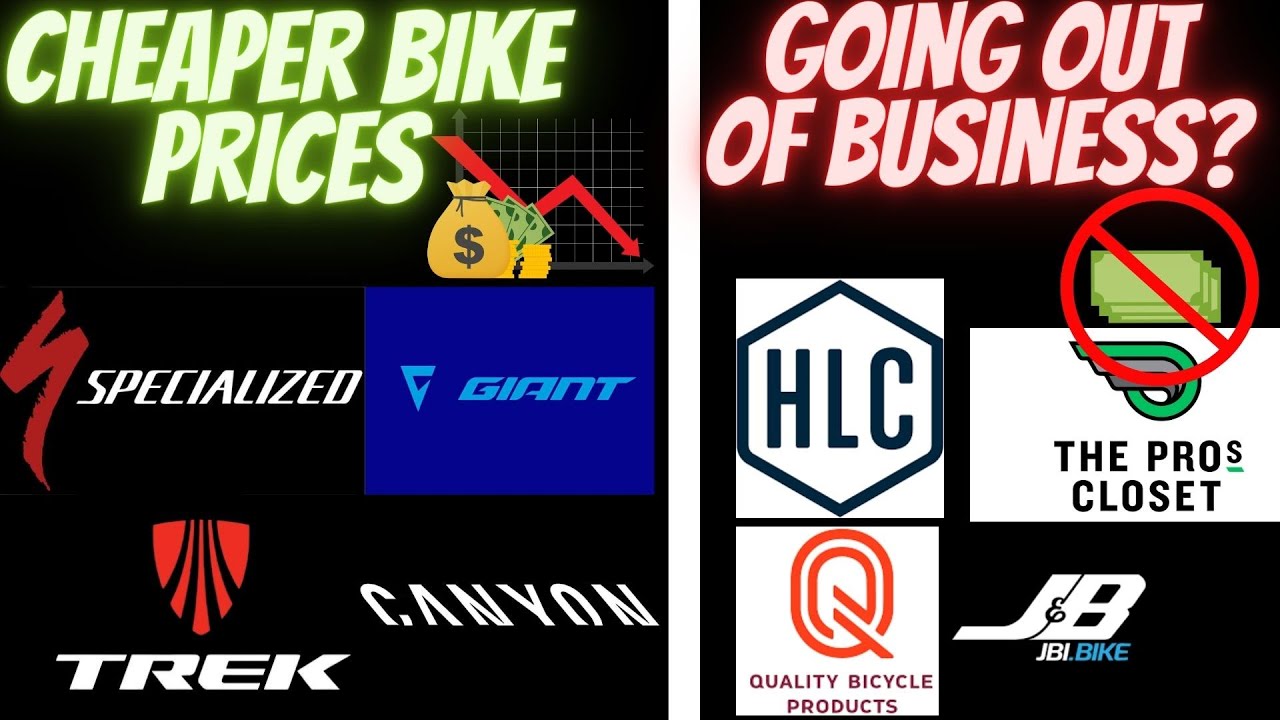WAS 2023 THE CORRECTION YEAR FOR BICYCLE INDUSTRY? or IS 2024 GONNA BE EVEN WORSE? with GC Performance
Video WAS 2023 THE CORRECTION YEAR FOR BICYCLE INDUSTRY? or IS 2024 GONNA BE EVEN WORSE? with GC Performance
Video WAS 2023 THE CORRECTION YEAR FOR BICYCLE INDUSTRY? or IS 2024 GONNA BE EVEN WORSE? with GC Performance YouTube Channel.
WAS 2023 THE CORRECTION YEAR FOR BICYCLE INDUSTRY? or IS 2024 GONNA BE EVEN WORSE?
2024 Predictions for the Cycling Industry: What to Expect and How Companies are Adapting
In this video, GC Performance discusses the potential impact on the cycling industry in the coming year. With 2023 being labeled as a “correction year,” the industry has faced challenges and uncertainties. As the industry braced itself, it’s essential to understand the predictions for 2024, how companies are strategizing to combat the downturn, and the potential implications for retailers and consumers. Let’s dive into the key predictions for the cycling industry in 2024.
Impact of 2023: A Reflection on the Correction Year
The year 2023 brought significant challenges for the cycling industry. Companies faced financial troubles, leading to bankruptcies and closures. Major brands like Trek had to compete with online direct consumer prices by adjusting their price points to stay competitive. Giant, a prominent name in the industry, also faced pricing challenges, making it evident that the industry was undergoing a significant shift in response to market demands.
Predictions for 2024: Market Corrections and Price Adjustments
Looking ahead to 2024, it’s expected that the trend of lowering bicycle prices will continue. Specialized, known for its industry-leading standards, may need to adjust its pricing to align with other major brands like Trek and Giant. The fluctuation in prices can have a direct impact on retailers, creating challenges to stay competitive in the market.
Trek, for example, released a road bike at a competitive price point, aiming to attract consumers with its affordability. However, the market shift and price adjustments can result in a bidding war among retailers, as they strive to remain profitable amid changing dynamics.
The Role of Inflation and Deflation: Navigating Financial Pressures
The industry is not immune to the effects of inflation and deflation. As prices fluctuate, retailers face the challenge of inventory devaluation. The anticipation of market corrections in 2024 may lead to a deflationary cycle, where prices are slashed in a race to the bottom. This can have significant implications for retailers as they navigate inventory management and pricing strategies to remain competitive.
The Impact on Small Retailers and Chains: Adapting to Shifting Dynamics
The industry challenges in 2023 and the predicted market corrections in 2024 have a ripple effect on small retailers and large chains alike. Small retailers, like GC Performance, may face pricing pressures and inventory devaluation as market dynamics shift. Similarly, large chains may reevaluate their presence and investments in the cycling industry, leading to potential closures or restructuring.
The Challenges of Excess Inventory: Navigating Through Uncertain Times
The aftermath of the pandemic has led to substantial challenges for companies like Holly Quality, JBI, and others. The surge in demand during the pandemic led to surplus inventory, which now presents a significant challenge. Excess inventory can lead to financial strain and impact the overall stability of the industry.
The Uncertain Future of Pros Closet: Implications for Used Bicycle Markets
Pros Closet, a prominent player in the certified used bicycle market, has also faced challenges. The surplus of used bicycles and the slowdown in consumer demand have created a challenging landscape for the company. The potential for a significant market shift can have widespread implications for the industry as a whole.
Navigating 2024: Strategies for Resilience and Adaptation
In light of the predictions and challenges anticipated in 2024, it’s crucial for retailers to adopt strategic responses. Keeping cash on hand, ordering strategically, and reevaluating inventory stocking strategies can help retailers navigate the uncertain times ahead. Furthermore, reexamining the focus on higher-end bicycles and adapting to changes in consumer spending can provide a path to resilience.
The Future of the Cycling Industry: A Collective Endeavor
As the industry continues to navigate through challenging times, it’s imperative for industry players to come together and strategize for a sustainable future. Collaboration, strategic planning, and consumer-focused approaches will be vital in ensuring the resilience of the cycling industry in 2024 and beyond.
In conclusion, the predictions for 2024 shed light on the complex challenges and adjustments facing the cycling industry. As companies and retailers adapt to market corrections and changing dynamics, it’s essential to approach these challenges with resilience and strategic foresight. By acknowledging the potential implications and adopting proactive measures, the cycling industry can navigate through uncertainty and pave the way for a sustainable future.
The opinions expressed in this space are the sole responsibility of the YouTube Channel GC Performance and do not necessarily represent the views of CicloNews.










